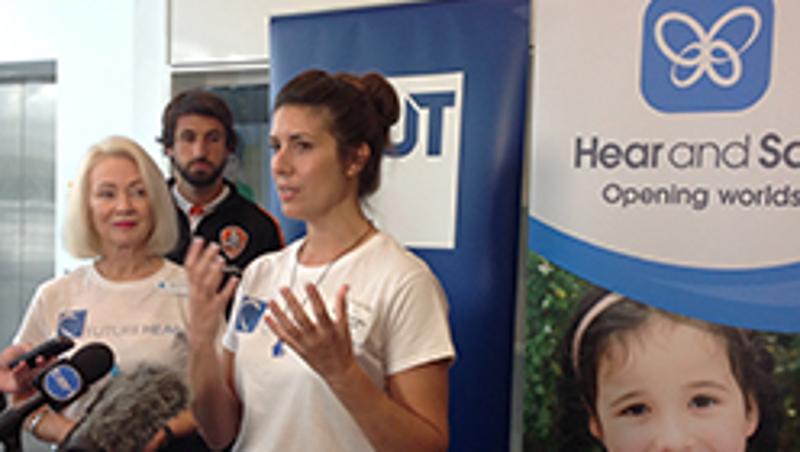
An exciting crowdfunding campaign to fast track the development of 3D printed prosthetic ears for children born without an ear kicks off today.
The FutureHear crowdfunding campaign is part of a partnership between QUT and Hear and Say, a charity providing hearing, listening and speaking solutions for children, to develop next-generation 3D printed prosthetic ears.
Associate Professor Mia Woodruff, from QUT’s Institute of Health and Biomedical Innovation, said the crowdfunding for FutureHear gave everyone a chance to support world-first medical research to help children with microtia have a normal life.
“No one in the world is researching 3D printing of life-like materials to create external ears,” Professor Woodruff said.
“Crowdfunding is common nowadays for start-ups and arts projects but it is not the usual route to gaining financial support for biomedical research.
“We thought this research is new – we need funds for the next phase - let’s try a different way and ask the public to help us quickly raise money for this project that will produce tangible benefits for thousands of children.
“The best part is the public get to share our journey online and see a science project in action.
“Our aim is $200,000 over 48 days to fund vital development of 3D printing technology for multi-material, flexible, lifelike prosthetic ears customised for each child with microtia.
“Children with microtia often have one unaffected ear and we are developing a simple, non-invasive, child-friendly technology that will enable us to scan the ear with a mobile phone and produce a 3D computer model.
“We need funding to take the research groundwork we have already achieved to a complete product that we can produce in-house at Hear and Say.”
Professor Woodruff said a further research goal was to produce technology to enable prosthetic ears to be 3D printed as cheaply as the cost of a pair of glasses.
“Till now, parents have had to have hand-sculpted prosthetic ears made at a high cost that are replaced every three to five years.”
Dr Dimity Dornan AO, Hear and Say’s Founder and Executive Director, said the research collaboration was a step towards the ultimate goal of the FutureHear project which was to develop a living ear with in-built hearing assistance technology.
“The next step for Professor Woodruff and her team is to produce a surgically implanted 3D printed ear scaffold containing the child’s own cells that will gradually dissolve and leave only new tissue,” Dr Dornan said.
“The real winners in this project is the children affected by microtia and their families who are seeking a cost effective and more accessible solution.”
The FutureHear crowdfund was launched as part of the eighth Hear and Say Australian Microtia and Atresia Conference.
FutureHear is crowdfunded on Pozible. Supporters are recognised with a variety of items including 3D printed pendants, interactive lab tours and 3D wall art.
To donate go to: www.pozible.com/project/futurehear
Media contacts:
Niki Widdowson, QUT Media, 07 3138 2999, or n.widdowson@qut.edu.au
After hours: Rose Trapnell, 0407 585 901 or media@qut.edu.au




